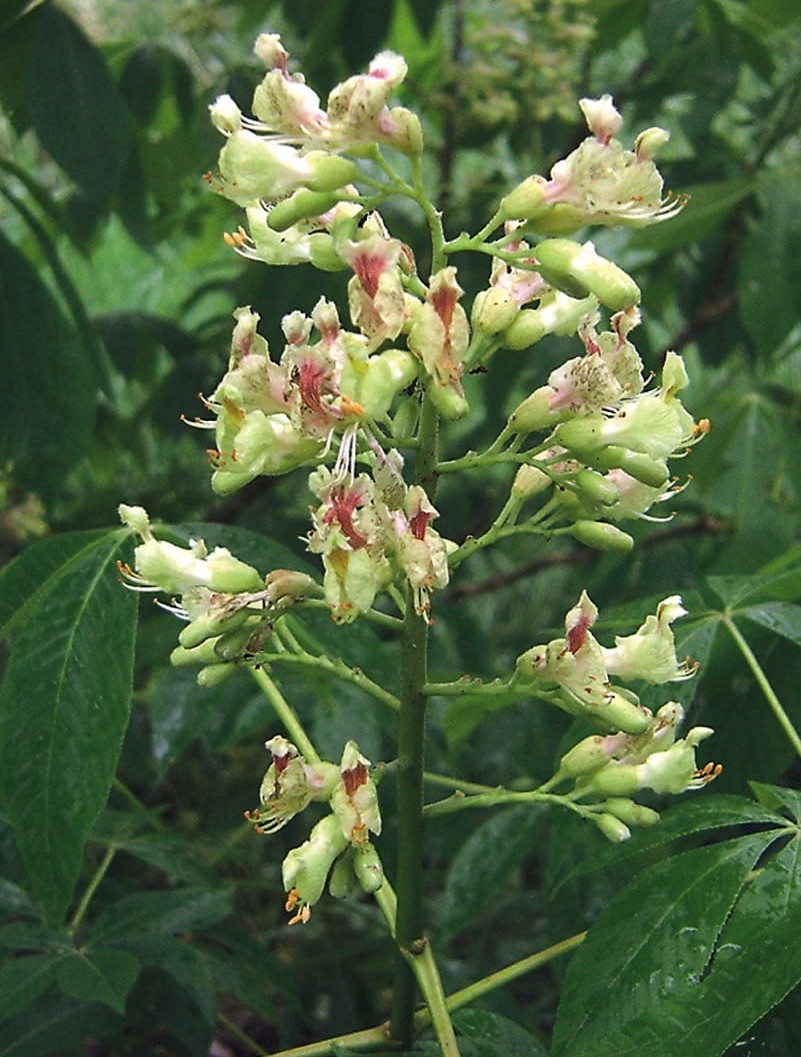Aesculus × marylandica
Credits
Article from New Trees by John Grimshaw & Ross Bayton
Recommended citation
'Aesculus × marylandica' from the website Trees and Shrubs Online (treesandshrubsonline.
Genus
Other taxa in genus
- Aesculus × bushii
- Aesculus californica
- Aesculus × carnea
- Aesculus chinensis
- Aesculus + dallimorei
- Aesculus flava
- Aesculus glabra
- Aesculus glabrescens
- Aesculus glaucescens
- Aesculus hippocastanum
- Aesculus indica
- Aesculus × mutabilis
- Aesculus × neglecta
- Aesculus octandra
- Aesculus parviflora
- Aesculus pavia
- Aesculus splendens
- Aesculus sylvatica
- Aesculus turbinata
This taxon is the result of a cross between A. glabra and A. flava. Such hybrids typically have exserted stamens, stipitate glands on the pedicels and perianth surfaces, and greater differences of size and shape between the upper and lateral petals than in the parents. The capsule walls usually have some spines, though large areas may be spine-free. Hardin 1957b. Distribution USA: Alabama, Illinois, Indiana, Iowa, Kentucky, Michigan, Missouri, Ohio, Tennessee. Habitat As for the parent species. USDA Hardiness Zone 6. Conservation status Not evaluated. Illustration NT119. Cross-reference K122.
Aesculus ×marylandica is another collector’s tree, and apparently rather rare, although it is commercially available from European and British nurseries. The only large specimen noted by TROBI is an old 8 m tree at Kew whose origin is unrecorded. At Herkenrode and Arboretum Wespelaar it grows vigorously (K. Camelbeke, pers. comm. 2007). The flowers are soft yellow, and in autumn the leaves can turn an excellent gold.

